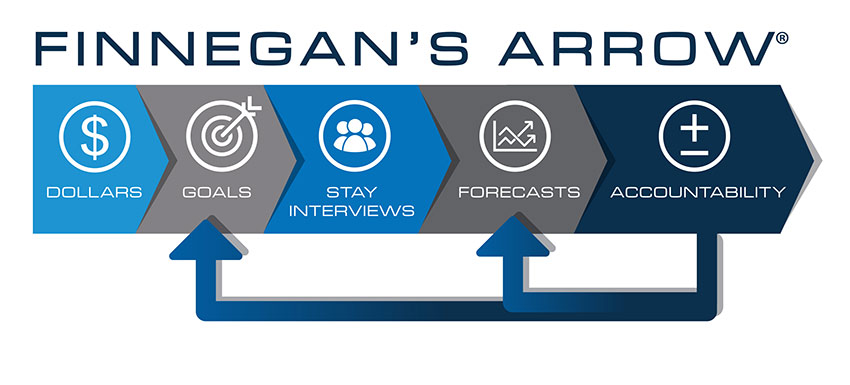AI, deportations, tariffs, and birthrate declines are reshaping America's workforce—blue- and white-collar alike. From baby boomer exits to AI disruptions, breaking down the workforce challenges no leader can afford to ignore.
There Is Finally A Real Engagement & Retention Solution

Last week I bad-mouthed exit surveys for all the right reasons, saying among other derogatory things that one reason HR continues to conduct exit surveys is because HR must do something about cutting turnover…and it seems we’ve all been weaned on exit interviews as the answer.
I love everything about SHRM…the website, webcasts, conferences and more. But at their core, this list is prominent on the SHRM site and summarizes their product line:
HR TOPICS
- Behavioral Competencies
- Benefits
- California Resources
- Compensation
- Diversity & Inclusion
- Employee Relations
- Global HR
- Labor Relations
- Organizational & Employee Development
- Talent Acquisition
- Technology
- Specialized Workplace Topics
Write me to tell me if you disagree with this statement:
HR’s primary job is to implement processes to acquire talent, engage talent, and retain talent. Everything else HR does contributes to these three responsibilities.
So my premise for why HR continues to conduct exit interviews is because HR needs a fix or the appearance of a fix to solve turnover…just as HR conducts engagement surveys to solve or appear to solve employee engagement. If I asked SHRM why engagement and retention are not on their list, I suspect they would tell me the primary tools for engagement and retention are surveys and SHRM has stayed away from the survey business. They might also say every topic on their list contributes to engagement and retention.
Their real reason I suspect, though, is because our world hasn’t figured out how to solve engagement and retention. Witness Gallup telling us engagement hasn’t budged in the 21 years since they’ve been tracking it…and U.S. voluntary quits are trending at an all-time high during 2021 as I write this.
I think SHRM has delegated engagement and retention to vendors, the ones who fill their 3-football-field long expo hall at the SHRM annual conference, who continue to peddle worthless surveys of all types that result in more one-size-fits-all programs like pet insurance.
I recall once seeing a vendor’s booth with a sign that newsletters cut turnover. I asked that rep for the data behind that claim and he said, “Everyone knows employees quit because of poor communication so newsletters fix that”. Enough said.
Cue the bugles with triumphant music! The spotlights spanning across the crowd! There IS a solution to employee engagement and retention. And it is based on SCIENCE.
Some of you know I did informal post-graduate work under a leading Industrial Psychology professor so I could learn all of the science regarding cutting employee turnover. I digested scores of professionally-judged journal articles and dissertations regarding what processes influence getting employees to stay vs which ones fail to improve retention. The answers are (1) the primary reason why employees stay or leave or engage or disengage is how much they trust their boss, and…well, that’s all you need to know.
Promise yourself from this day forward you will carefully examine every sentence a vendor tells you…and you will avoid any publication that uses the phrase “best practice”.
We keep a list of companies where we’ve cut turnover 30% and more. The list is simple…company logo, percent turnover decreased, dollars saved in the first year. What follows are the “percents turnover decreased” for the first 5 companies on our list:
47%, 56%, 57%, 58%, 72%
And their accompanying first-year dollars saved are:
$212M, $1.8MM, $185M, $1.2MM, $412M
The science behind our solution calls for (1) converting turnover to dollars to alarm executives so they don’t find joy in worthless benchmarks, (2) establishing retention goals for leaders on all levels, (3) training leaders to conduct Stay Interviews and then immediately forecast how long each employee will stay, and then (4) holding leaders accountable for their goals and forecasts. This is how this science-based solution looks:
The easy way to think about our approach is it is identical to how companies manage salespeople. Salespeople know the dollar value for each sale for themselves and their companies, salespeople have sales goals along with sales tools, salespeople forecast future sales…and salespeople are accountable for achieving their goals and forecasts. Substitute “managers” for salespeople and “retention” for sales, and our models are the same.
This “identical to salespeople” comparison is vital because the time is now…as it was decades ago…to move responsibility for managing people from HR to operations. And that includes retention and engagement. Doing so requires that the right processes be put into place. Think of the processes your organization has for important outcomes beyond sales such as quality or service. Let’s move employee retention to those levels, those places where leaders are accountable not just for retention outcomes but also for retention process implementation, and CFOs report their outcomes to the executive team and the board.
Want Dick Finnegan to speak at your next company meeting or conference? Or your local SHRM conference? Please email him at DFinnegan@C-SuiteAnalytics.com. You are also welcome to forward this blog to anyone you believe would find it helpful.




